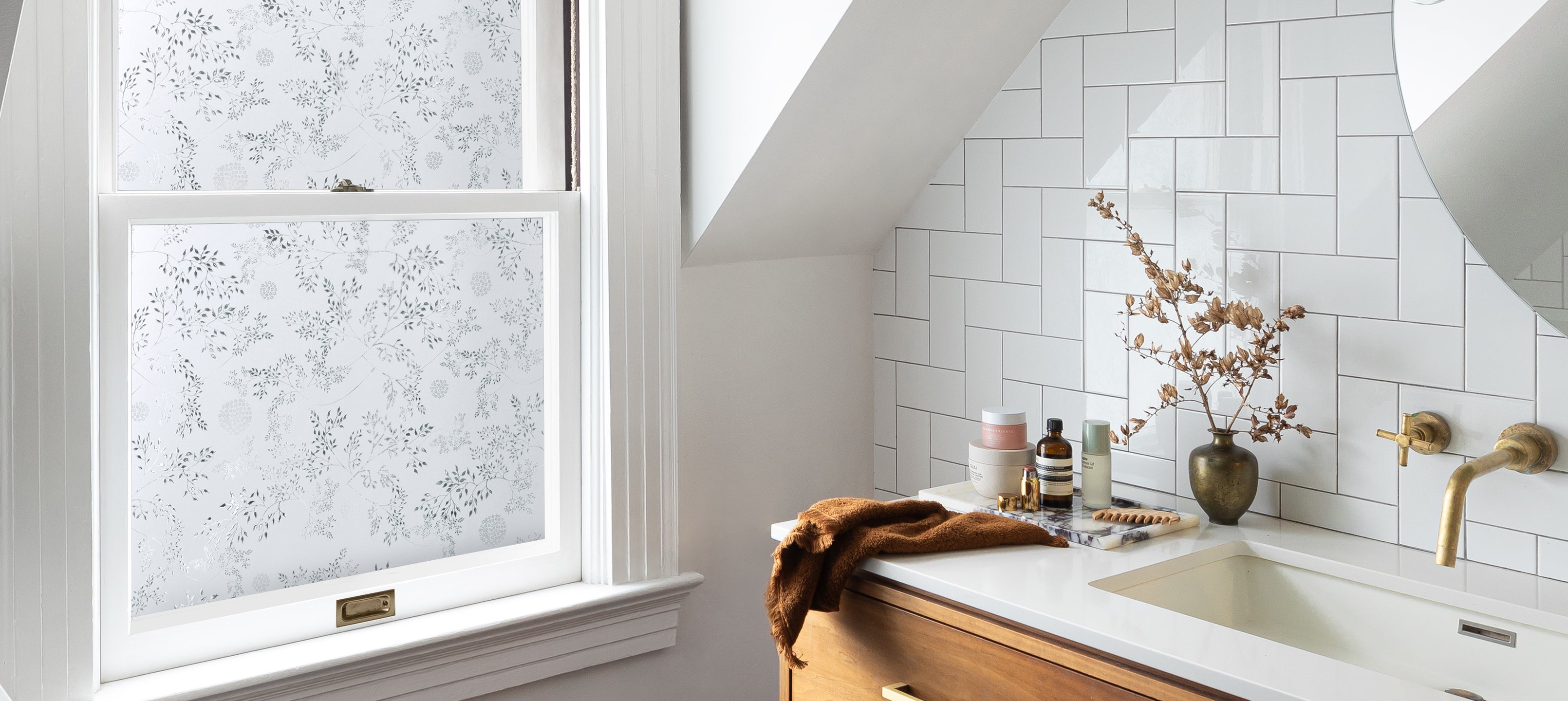TOOLS NEEDED
Non-Woven Wallpaper Adhesive
Roller and Tray
Wallpaper Brush
Measuring Tape
Level
Utility Knife
Ladder
Straightedge / Ruler
Sponge and Clean Water
PREP AND INSPECT
Thoroughly clean and dry the area to be wallpapered. Remove any nail heads, nicks and other surface imperfections. If the wall color is significantly different from the wallpaper, apply a primer coat in a similar shade to the wallpaper’s base color. Pre-cut the wallpaper along the trim lines between panels to allow it to relax before installation, and inspect each panel for defects or damage. Lay the panels in the room where they will be installed for 24 hours to acclimate to the temperature, minimizing the risk of shrinking or visible seams.
MARK YOUR STARTING POINT
To ensure your wallpaper hangs straight, you will need to create a plumb line; this is a vertical line to help guide the first drop of wallpaper so it hangs straight down. Start at the left corner or left edge of the wall and measure out the width of the roll minus half an inch. Mark this point near the ceiling and use a level to draw a straight vertical line down the wall. Positioning the wallpaper with a slight overhang at the edge or corner helps prevent gaps due to uneven walls.
APPLYING THE ADHESIVE
Use only a non-woven adhesive and apply it directly to the wall. Roll on an even layer of adhesive, covering one panel width at a time with slight overlap. Use a brush to apply paste around molding and baseboards to minimize excess. Ensure full coverage, as any unpasted areas may cause bubbles. Do not allow the paste to dry before applying the wallpaper.
HANGING THE WALLPAPER
Starting with Panel 1, align the right side of the panel to your plumb line, allowing a slight overhang at the ceiling. Smooth the wallpaper onto the wall using a wallpaper brush or soft squeegee, working from the top down and center outward to remove air bubbles. Allow the bottom of the panel to slightly overlap the baseboard or floor. If adhesive gets on the front of the wallpaper, gently wipe it off immediately with a damp sponge, avoiding rubbing. Repeat these steps with your remaining panels in chronological order matching the design from the previous strip. Press panel edges together to ensure there isn’t a visual seam between the two panels.
TRIMMING
After all panels are hung, trim excess material at the ceiling, baseboard, and corners using a straightedge and sharp utility knife. Hold the straightedge firmly against the wallpaper and guide the knife along its edge for a clean cut. Change the blade frequently to ensure smooth, precise cuts.









